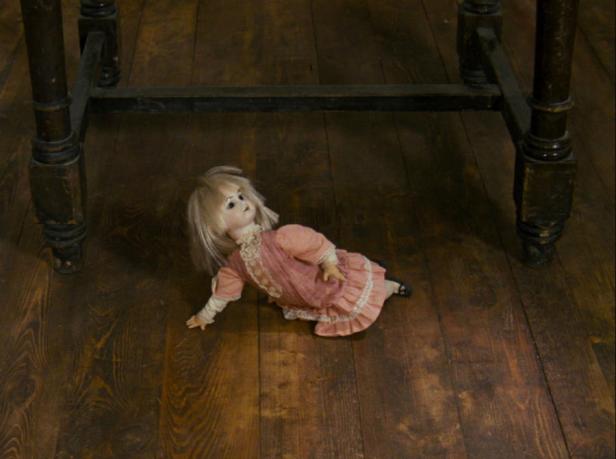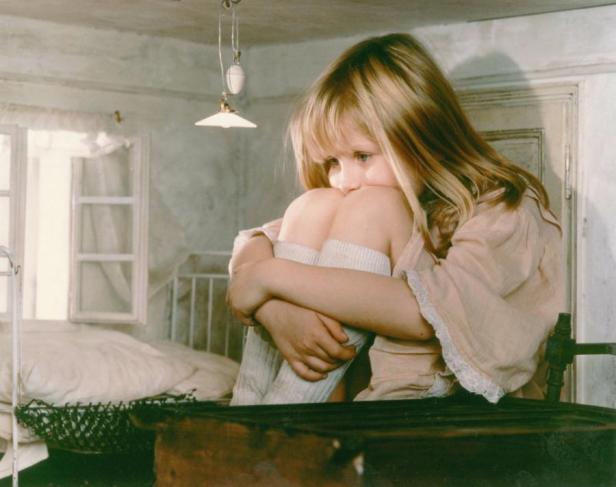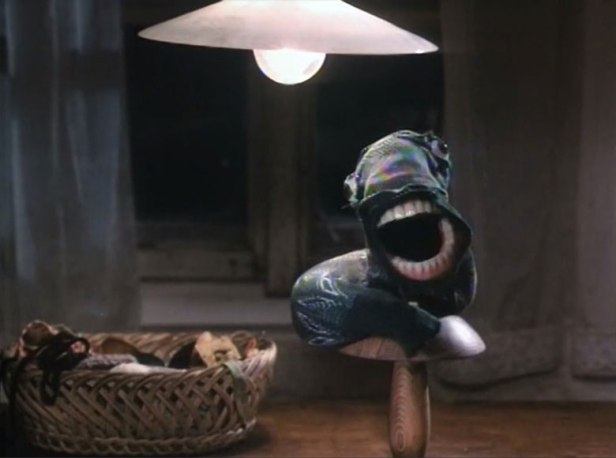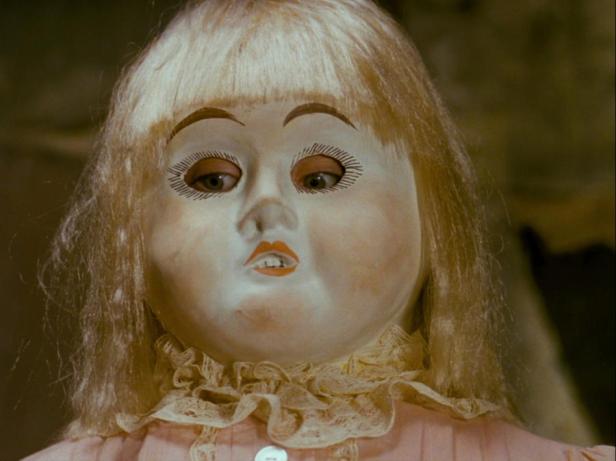
This version of Lewis Carroll’s Alice in Wonderland (1885) was produced for Jan Švankmajer in Switzerland for public broadcasters Channel 4 TV in the UK and Hessischer Rundfunk in West Germany. Originally in Czech and subtitled, the film was dubbed in an American print and released in cinemas in North America. Švankmajer was born in 1934 and he has released two feature length films in the last few years (Insect 2018) and (Kunstkamera 2022). I haven’t seen anything by him since Surviving Life (2010) and Lunacy (2005). Early in his long career he made many short films using stop-motion animation before moving into features production with this 1988 film combining animation and ‘live’ action. His wife Eva Svankmajerová (1940-2005) was a surrealist artist and a collaborator on her husband’s films as an art director. She designed the poster above. Svatopluk Malý was the photographer on the film and Marie Zemanová was the editor. Alice is now streaming on MUBI in the UK along with a second feature-length film Little Otik (UK 2000).

Like most of us, I must have seen several adaptations of Alice in Wonderland and so I knew roughly what to expect. The film does stick to the familiar characters and the main events in the story but Švankmajer’s imagination creates quite unique presentations of the characters and a unique mise en scène. Alice (Kristýna Kohoutová) is the only live actor in the film – though we see a pair of legs that presumably belong to her sister who is attempting to read while Alice beside her is bored and looking for adventure. Every other character in the fantasy is created by stop-motion animation. The film is 86 minutes long. It’s difficult to fully appreciate just how much work must have gone in to making this extraordinary film. The other aspect of production is that the other characters do not speak as such. Their dialogue is spoken by Kristýna Kohoutová but we only see a close-up of her lips as she delivers the lines and attributes them (e.g. “An invitation from the Queen for Alice”, repeated the Frog footman).

The film is sometimes seen as a children’s film or a ‘film for children’, following the popularity of Lewis Carroll’s story. In the UK it is classified ‘PG’ and that seems about right. In fact the opening credits repeat this claim. If you think a child might enjoy/be intrigued by the film, I would certainly recommend having an adult with them. If you have seen anything else by Švankmajer, you will be aware of his fondness for insects, reptiles and various mammals and here they transform themselves in many different ways, sometimes quite disturbingly. The film is also quite violent in parts. Famously the Queen is always commanding “Off with their heads” and there are many pairs of scissors, handy for carrying out such an order. Alice herself is threatened in different ways – including one extraordinary scene which involves a rat lighting a fire on her head when she is up to her chin in water (actually the tears she has cried). I read that Švankmajer loved Carroll’s story but was disappointed by the adaptations that turned it into a fairy story (and not a Brothers Grimm story). Instead he set out to make a dream/nightmare narrative and adults can have fun with both the surrealism and the potential Freudian references to incidents with water and keys. Possibly my favourite sequence involves Alice’s encounter with worms in the form of inflated socks which burrow their way through the floorboards. In the desk drawer which appears in most scenes, Alice discovers a darning basket and watches as a sock ready for mending finds a set of false teeth and a glass eye and addresses the little girl. The dialogue suggests that this character is the Caterpillar.

I have tried to research more details about Kristýna Kohoutová without any luck. She is not listed on IMDb as having any other credits. She is in nearly every scene but given the time necessary to create all the stop motion animation sequences, filming must have taken a long time. She would not have been continuously working. I’m not good on the ages of children but for most of the time I would say Alice is presented as a young girl in a traditional dress. There were a couple of occasions when I thought she looked older as a young teenager. Was this my imagination? The narrative is a fantasy so it doesn’t really matter if the continuity is not completely tight. When Alice shrinks (there are two different triggers for this process) she becomes a child’s doll with a rather serious expression. At another point, the life-size Alice is imprisoned in a very unflattering carapace of herself (look carefully at the poster).

I found the film to be highly entertaining and certainly disturbing in many ways. I marvelled at the overall production design and at the creation of the characters. The film is widely available and can be rented from Apple or Amazon. If you search you can also find it free online. The clip below shows the sequence in which Alice is threatened by her ‘sea of tears’ and a rat tries to take advantage.
